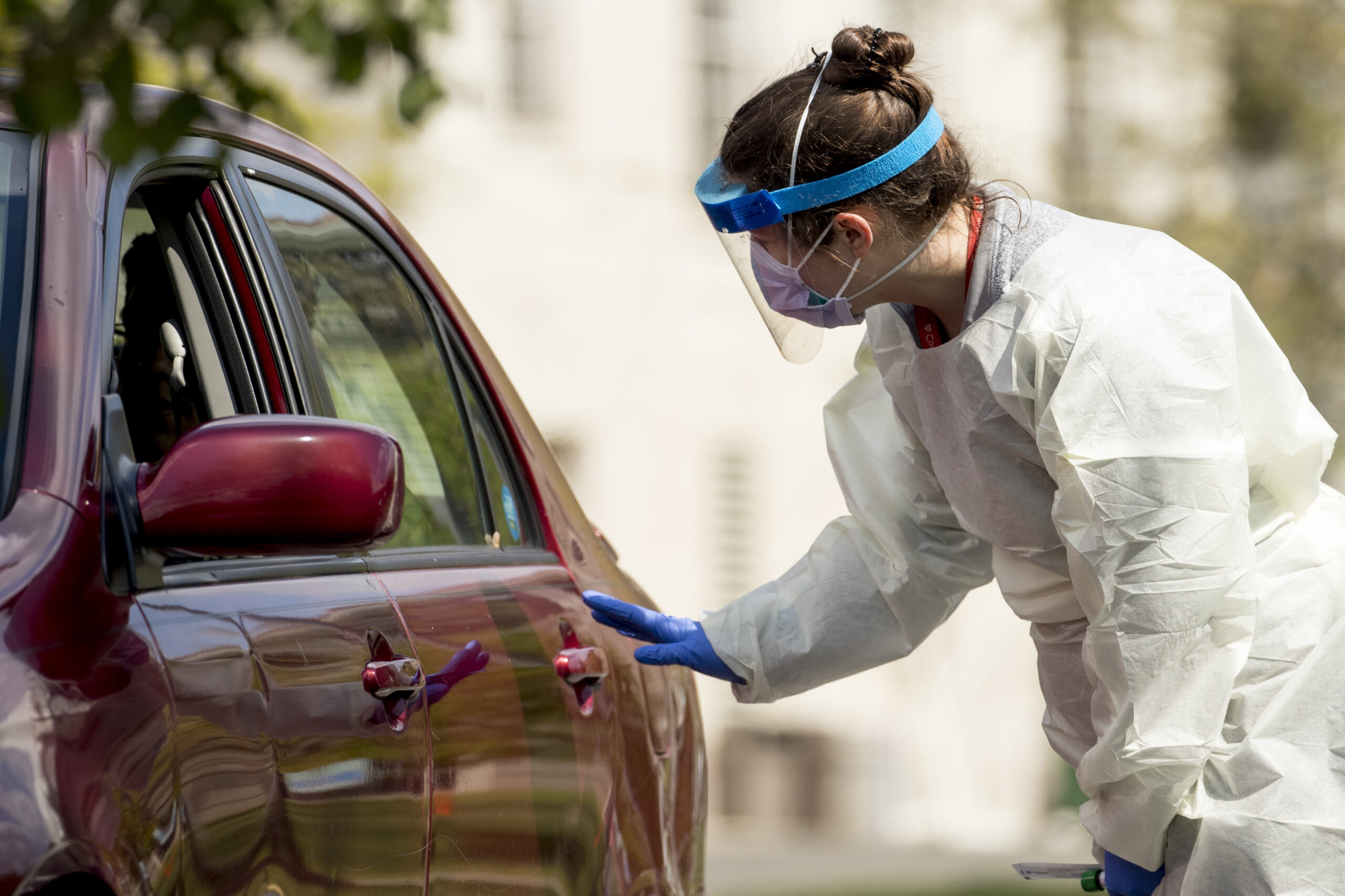White House Report: Georgia Coronavirus Response Still Falling Behind Most Of U.S.

In its latest assessment, the White House Coronavirus Task Force makes a number of recommendations to Georgia officials, including issuing a statewide mask mandate for counties with 20 active cases or more and closing bars in counties with rising test positivity. White House reports from previous weeks have made similar suggestions, but Gov. Brian Kemp has repeatedly declined to take such steps.
Andrew Harnik / Associated Press file
For the second week in a row, a Trump administration assessment of states’ efforts to curb the spread of the coronavirus says Georgia is falling behind most of the rest of the country.
The latest report from the White House Coronavirus Task Force says the state had 167 new COVID-19 cases per 100,000 people in the week leading up to Aug. 23, the second highest rate in the U.S. The report from the prior week said Georgia led the country in new cases.
The document, obtained by WABE, acknowledges that the state is making progress in driving down some key statistics, such as the number of new coronavirus infections and the percentage of diagnostic tests that return positive results.
It says 52% of Georgia’s counties are seeing high levels of disease spread and a vast majority of the state is seeing ongoing community transmission of the coronavirus, even though fewer counties are in the “red zone” for new COVID-19 cases and test positivity.
For weeks, Gov. Brian Kemp has pushed back on the Trump administration’s analysis of Georgia’s fight against the coronavirus and how it’s been covered in the press. His office has repeatedly pointed out many key metrics have recently shown improvement, which the federal report acknowledges.
“Georgia continues to make progress in the fight against COVID-19 with notable declines in the number of cases, hospitalizations, and positivity rate,” said spokesperson Candice Broce in a statement.
However, public health experts and the task force report say things could be improving more rapidly, and any gains could be easily reversed. The White House document calls any positive figures “fragile” and says they “need to accelerate … throughout the state.”
“My concern is that we’re making progress, but our progress is both slow and, frankly, tenuous,” said Dr. Carlos del Rio, who studies infectious diseases at Emory University.
He argues that any improvement Georgia has made in recent weeks needs to be put in the context of where the state was in late July: regularly reporting more than 4,000 new COVID-19 cases a day. Over the past week, the average number of infections reported each day has been about 2,400.
And while del Rio says he’s happy to see statistics such as test positivity trending downward, there’s still much room for things to improve.
“We’re making progress, but we’re not making a lot of progress. I think we need to do better,” he said.
Related: Tracking COVID-19 in Georgia
In its latest assessment, the task force makes a number of recommendations to state officials: issue a statewide mask mandate for counties with 20 active cases or more; close bars in counties with rising test positivity.
White House reports from previous weeks have made similar suggestions, but Kemp has repeatedly declined to take such steps.
That’s forced Georgians to decide for themselves whether to follow public health guidance, del Rio says, such as wearing masks in public and avoiding large gatherings.
“What we’re seeing is progress that we’re seeing because citizens are taking action,” he said. “I worry without enforcement of this, these small gains can be lost very quickly.”
Other public health experts have expressed similar concerns: that without government mandates, people will see the modest progress the state has made in recent weeks and relax prevention measures.
The Trump administration document also says Georgia is losing ground when it comes to COVID-19 testing.
It found that the number of diagnostic tests conducted in the state dropped more than 16% from the week prior, though the document notes that number could be an underestimate because of reporting delays.
Kemp’s office says it has seen a decline in demand for testing in recent days across the state and is considering “renewed deployment of mobile strike teams to specific areas of need using the Georgia National Guard.”
“This strategy has worked well to address hot spots — such as Albany and the surrounding community and the Gwinnett County area,” spokesperson Broce said in a statement.
During a news conference last week where he pushed back on a previous task force report, Kemp said he had little ability to improve Georgia’s diagnostic testing figures.
“You can’t blame the government if people don’t want to go get tested,” he told reporters.
Still, this week, the Georgia Department of Public Health announced a COVID-19 testing site near Atlanta’s Hartsfield-Jackson airport would remain open for nearly two weeks longer than originally scheduled. The drive-up site, which can process 5,000 tests a day, hasn’t come close to meeting that daily threshold since it opened in mid-August.
“The approach to testing has been misguided,” said Dr. Harry Heiman, who studies public health at Georgia State University. “It’s been an approach based on mega drive-in centers at a time when the majority of people that are at greatest risk either can’t take time off from work to go to those centers or don’t have access to transportation.”
State officials could do more, Heiman said, to make testing more accessible to the people most likely to be disproportionately impacted by COVID-19, such as those in low-income and minority communities.
It’s a recommendation the task force echoes in its report, which encourages Georgia officials to continue to expand testing “especially in underserved neighborhoods” by using outreach workers that “are a reflection of the community they trust.”
Related: Dig deeper into the COVID-19 pandemic with our podcast, “Did You Wash Your Hands?”
The task force has been issuing state-level reports on the pandemic for weeks but has declined to make them publicly available. WABE and outlets, such as The New York Times, The Center for Public Integrity and the Atlanta Journal-Constitution, have published some of the documents, which reporters have obtained from sources.
But there’s a growing call from public health experts — including Heiman and Emory’s del Rio — for the documents to be available for all to see.
“It should be released publicly by the White House, and it should be released publicly by each state,” Heiman said. “Leadership at all levels should have a candid conversation with the public about where we are.”








